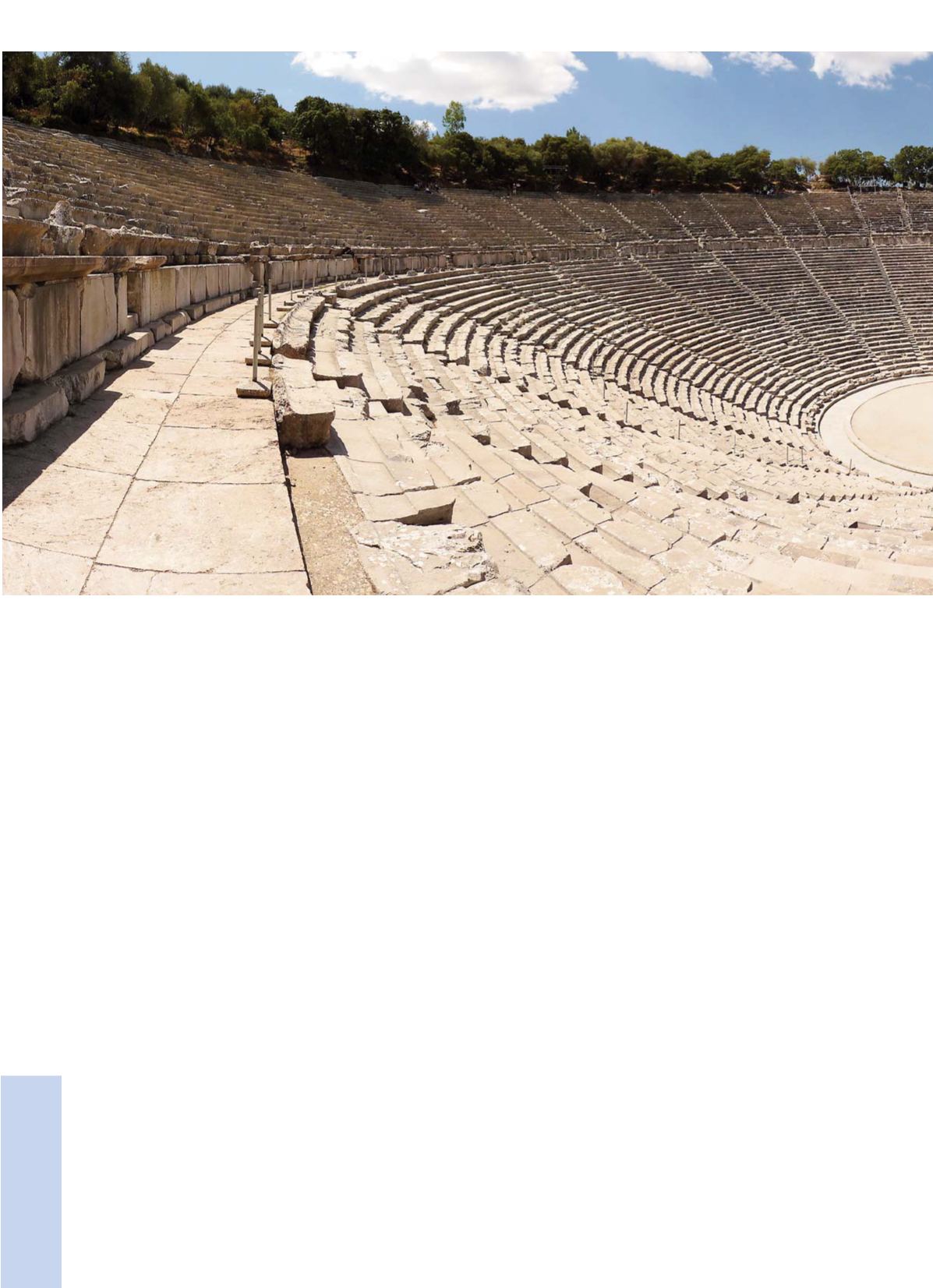
“
paraskenia
”. The alterations made during the
Hellenistic period probably had to do only with this
structure, which was refurbished in monumental
form.
In Roman times the
skene
was extended to part of
the orchestra and was built in stone, while the lower
front of the stage (
proscenium
) was adorned with
the kneeling figures of Sileni, Dionysus compan-
ions, which can still be seen today. The
orchestra
took on the shape of a horseshoe and was paved
with coloured marble slabs that survive till this date.
In the 2nd century CE (after 160 CE), the Odeon of
Herod Atticus was also built on the south slope of
the Acropolis and to the west of the theatre of
Dionysus, funded by the sophist Tiberius Claudius
Atticus Herodes, scion of a rich Athenian family, in
memory of his wife Regilla.
The Odeon’s semicircular
koilon
comprises marble
seats and can host 5,000-6,000 spectators. The
semicircular
orchestra
and the
proscenium
date
back to the Roman period, while the walls of the
skene
are really impressive in terms of height and
construction. The building was externally covered in
marble, with niches adorned with statues. The
entire structure was roofed; its wooden roof, made
of expensive, cedar-of-Lebanon timber, and not
supported by pillars or other bearings, was consid-
ered to be an architectural marvel.
In 1867, the (recently excavated) Odeon hosted the
Trade with Greece
116
first modern performance of an ancient drama. After
its full restoration in 1955, the theatre became the
main venue of the Athens Festival. In the interven-
ing years, its scene hosted almost all —Greek and
international— leading artists from the world of
music, dance and, of course, theatre. Enjoying a
performance under the August moon and the shad-
ow of the Parthenon is an unforgettable experience
for deeply romantic spectators.
b) Theatre of Epidaurus
The ancient theatre of Epidaurus lies within the
precinct of the Asclepeion of Epidaurus, one of the
most important pan-Hellenic sanctuaries of Greek
antiquity, dedicated to Asclepius, the god of
Medicine. The theatre belonged to the city of
Epidaurus, a small Classical city-state, located on
the nearby west shore of the Saronic Gulf, on the
site of the modern town of Palaia Epidavros,
(almost 140 km from Athens and 30 km from the
city of Nafplio), in what is today the prefecture of
Argolid.
Over time, the worship of Asclepius, which in
ancient times led to the development of systematic
healthcare, was enriched with athletic and artistic
contests, as well as drama contests. These con-
tests were held in the sanctuary (theatre, stadium
etc.) and constituted an integral part of the celebra-
tions in honour of the healer-god, since it was


